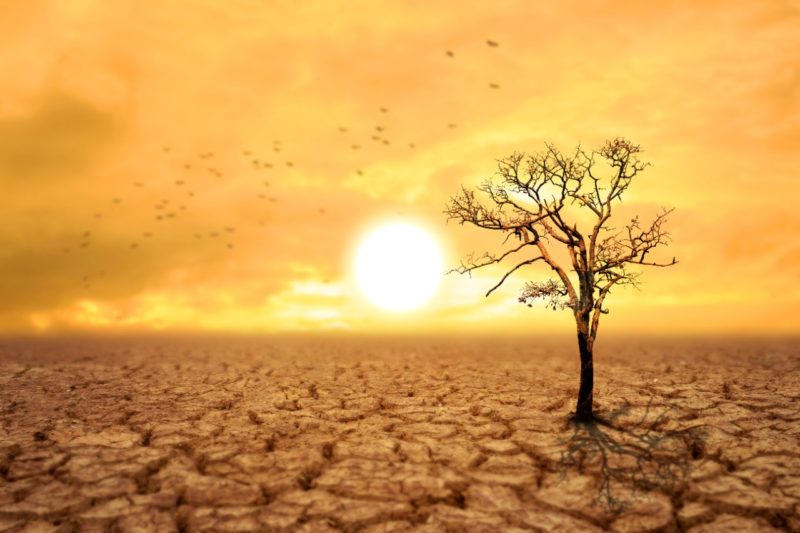Population increase along with economic growth and consumerism end up generating more emissions of greenhouse gases, which causes an aggravation of global warming and consequently the reduction of rainfall, resulting in a water crisis manifesting in the current Brazilian scenario. The CO2 present in the atmosphere, from the burning of fossil fuels, which has been increasing in tandem with economic growth, is responsible for 60% of the worsening of the greenhouse effect (PROCLIMA, 2021).
The high concentration of greenhouse gases causes the earth’s temperature to increase, and consequently, the water cycle is affected. Because of this, we have greater evaporation of water from rivers, reservoirs as well as the oceans, as well as changes in water flow and changes in the rainfall regime, which can lead to water scarcity. The combination of low rainfall with increased demand for water due to population growth has generated a “Water Crisis” (MARENGO JOSÉ, 2016).
Another factor that is directly linked to the reduction in the number of rainfall in some regions of the country is the deforestation of the Amazon forest. The rainfall regime in southern and southeastern Brazil is influenced by the South Atlantic Convergence Zone (ZCAS), which transports moisture from the Amazon to these regions, creating conditions for rain showers in short periods of time in the summer period. The deforestation of the Amazon biome directly affects the levels of evapotranspiration in the forest, which results in a warmer climate and has a great influence on the ZCAS due to the reduction of humidity in the atmosphere (AMORIM, 2019). The reduction in the transport of moisture from the Amazon means less supply in hydroelectric reservoirs due to the lack of rain, as well as the reduction in the use of drinking water in some regions of the country.
Deforestation of the Amazon is primarily associated with forest fires intentionally caused by humans to expand the space for planting and raising animals. The more the population grows, the greater will be the demand for land for the production of food; thus, the water needs for irrigation agriculture will grow, since, according to the United Nations (UN), Brazil currently uses about 70% of potable water for irrigation. In addition, the growing demand for land for agriculture and pastures, affects the amount of rain in regions of Brazil. The current consumerism model, where more than necessary is produced, also drives deforestation in the Amazon and other important Brazilian biomes.
Atlanta, October 19, 2021
By K.Silva, L.B.M.Pires and A.C.V.Freitas
REFERENCES
PROCLIMA (org.). Gases do Efeito Estufa e Fontes de Emissão. Available at https://cetesb.sp.gov.br/proclima/gases-do-efeito-estufa/. (Accessed September 10, 2021).
NAÇÕES UNIDAS BRASIL. FAO e Confederação Nacional da Agricultura lançam estudo sobre agricultura irrigada brasileira. 2018. Available at https://brasil.un.org/pt-br/79452-fao-e-confederacao-nacional-da-agricultura-lancam-estudo-sobre-agr icultura-irrigada. (Accessed August 08, 2021).
MARENGO, José Antônio. Crise hídrica em São Paulo em 2014: seca e desmatamento. 2015. Available at https://www.revistas.usp.br/geousp/article/view/100879/112855. (Accessed August 09, 2021).
AMORIM, Tamiris Xavier. Impactos do Desmatamento Progressivo da Amazônia na Precipitação do Brasil. 2019. Available at https://ojs.ufgd.edu.br/index.php/rbclima/article/view/14123/7356. (Accessed August 06, 2021).
WALBERT, Allan. Agricultura é quem mais gasta água no Brasil e no mundo. 2015. Available at https://memoria.ebc.com.br/noticias/internacional/2013/03/agricultura-e-quem-mais-gasta-agua-no-br asil-e-no-mundo. (Accessed August 06, 2021).

